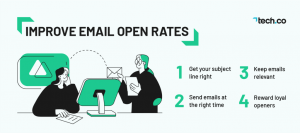The right way to hire an AI-ready workforce
Bad hiring decisions waste time, money, and productivity. To avoid hiring mistakes, this tech leader suggests a rigorous 3-step “structured interview.”
BY Heide Abelli
The strategic deployment of AI technologies is central to maintaining and enhancing competitive advantage in today’s digital economy. The expectation is that employees in the age of AI will focus on higher value-added tasks, those that AI cannot do well, such as innovating, exchanging ideas, and finding highly creative solutions to problems. It’s critical to bring new talent into the organization that has the uniquely human skills that AI lacks. This underscores the importance of meticulous talent acquisition.
Too often, organizations make bad hiring decisions resulting in wasted time, money, and productivity. Unstructured candidate interviewing leads to some of these hiring mistakes as interviewers typically do not follow a predetermined set of questions or a consistent procedure for evaluating candidates. Instead, the conversation may flow freely, with questions arising organically based on the interviewer’s intuition, something specific on the candidate’s résumé, or the direction of the conversation. While the unstructured approach can make the interview feel more relaxed and conversational, unstructured interviewing is problematic because there is significant unconscious bias, particularly confirmation bias and stability bias, built into the process. The lack of standardization can also lead to evaluations that are more influenced by the interviewer’s personal feelings and less by the candidate’s actual competencies and skills. As a result, unstructured interviews tend to be unreliable in ensuring a candidate has the critical qualities for a position.
So how do we properly identify skills in the candidate interviewing process so that we bring in the right talent? Structured interviewing can provide more reliable insights into a candidate’s ability to do the job, especially in the age of AI. Here is a three-step approach to implementing structured interviewing to support getting AI-ready talent into your organization:
Carefully define what a good candidate looks like
Develop a clear definition of the key success factors (KSFs)—the knowledge, skills, and abilities—required to succeed in the role for which you are hiring. The job description is often the best starting place for developing the list of KSFs, but you can use focus groups, statistical analysis, and other sources to round out the list. Most knowledge worker roles in the age of AI will increasingly require individuals to have the following capabilities: strong social interaction skills, creativity, critical thinking ability, and curiosity. As a result, every job candidate in the age of AI should be evaluated against those four KSFs, in addition to the KSFs identified for the specific role. Once you have carefully defined the KSFs, you can create a scoring rubric to evaluate candidates effectively. On the left side of the rubric are the KSFs you’ve identified and along the top is a 1-5 rating scale—from weak to strong.
Decide on the best interviewing technique for each KSF
Once you have established the evaluation rubric, you can decide what interviewing technique to map to each KSF. There are three common techniques. The first are experience-based interviews. These interviews ask candidates to share something from their past that is related to the KSF being evaluated. For example, to evaluate creativity using the experience-based technique, you might say to a candidate: Tell me when you found a creative solution to a problem in your previous role.
The second are scenario-based interviews. A candidate is given a specific business problem that tests a KSF and is asked to respond to that problem in real-time. Scenario questions are often “think on your feet” type questions. For example, to assess complex problem-solving capability, you might present the following scenario. A windowless room has three light bulbs. If you can only enter the room one time, how can you determine which switch controls which light bulb? This type of question presents a scenario that requires the interviewee to logically deduce the solution through a process of elimination and inferential reasoning. The scenario-based approach enables a rich assessment of how a candidate solves problems and identifies creative solutions.
The third are real-time skill test interviews used to evaluate more technical KSFs (coding or data analysis skills for example). A candidate is asked to answer a predefined set of questions. For example, if the candidate needs to know how to program in TensorFlow you might ask: How would you implement dropout in a TensorFlow model to prevent overfitting, and what considerations would you keep in mind while doing so?
Depending on the nature of the role, all three techniques can be applied in a structured interview to do a well-rounded assessment of a candidate. Not every role will require a real-time skill test as part of the assessment, but most roles should incorporate both experience-based and scenario-based interviewing techniques.
Develop the interviewing guide
Once KSFs and interviewing techniques have been decided, an interviewing guide can be created. The guide should include questions for each KSF that match the chosen interview technique. For example, if a KSF for a purchasing role is “good negotiation skills,” then for an experience interview technique, an appropriate question for the guide would be: Describe a tough negotiation you had with a vendor. If a KSF for a software developer role is “strong python programming capability,” then there should be a real-time skill test question that requires the candidate to write a short program in python. Organize questions in a logical order, starting with experience-based questions followed by scenario-based and skill-test questions. Ensure that everyone who will use the interview guide is trained on what to listen for in responses, so that they can appropriately rate responses on KSF rating scale.
In the age of AI, the structured interviewing approach will become more valuable than ever. Traditional unstructured interviewing approaches will not yield the best results when the assessment of a candidate requires evaluation of uniquely human skills, such as creative thinking and ethical decision making. Another reason that structured interviewing is more important today than every before is that interviews are increasingly virtual and research suggests that structure benefits virtual interviews even more than face-to-face interviews. Imposing a structured interviewing process in your organization will help you ensure that you are getting the best possible talent and making fewer costly hiring mistakes.

ABOUT THE AUTHOR
(16)
Report Post





